MAD DOGS & BROOKLYN MAYORS (1844)
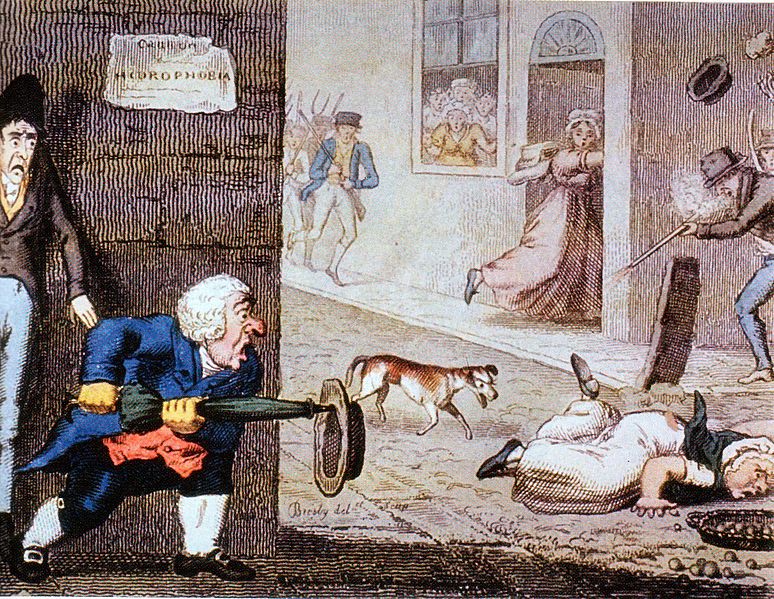
Brownstone Detectives investigates the history of our clients’ homes.
The story you are about to read was composed from research conducted in the course of one of those investigations.
Do you know the history of YOUR house?
********************************************************************************************************************************
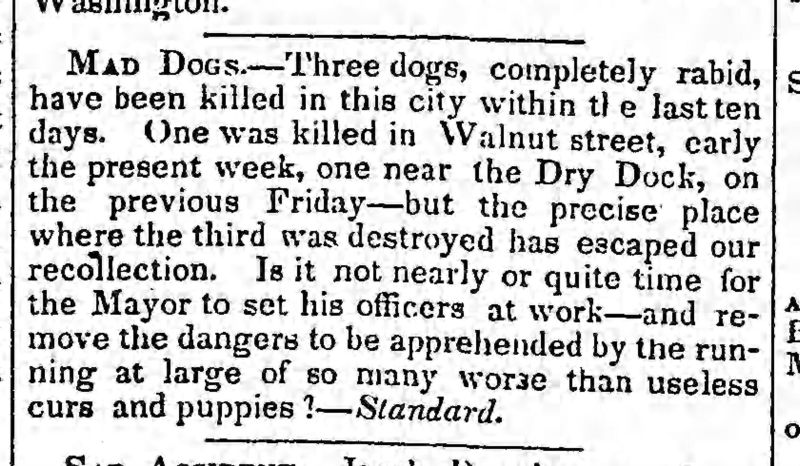
In Brooklyn in 1843, there was a dog problem.
A MAD dog problem.
The people of Brooklyn – in what makes up Brooklyn Heights and the Downtown Brooklyn area today – were getting fed up with the number of strays, a good number of which were exhibiting “mad” tendencies, biting Brooklynites from time to time.
A newspaper of the period complained of how “our streets are filled with miserable, half-starved curs whose dismal howlings make night hideous.”
They demanded, thus, that a law be enacted to “shield us from that frightful malady – hydrophobia.”
A FEAR OF WATER
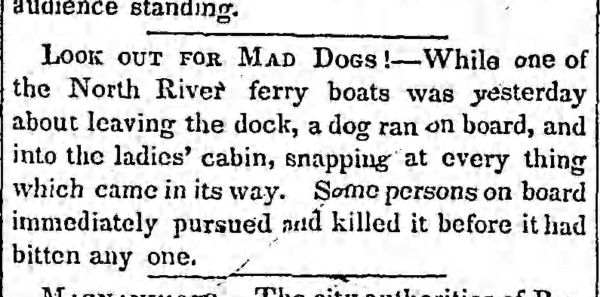
Back in the day, the disease that we know today as rabies was called hydrophobia. The disease was labeled hydrophobia – or a fear of water – because its subjects were not only unable to swallow water, but they had such a fear of it that it sent them into spasms or running from its very presence.
And, of course, there was no cure for hydrophobia.
Although, there was no shortage of quacks who sold “instant cures” to the masses through the mails or in their offices – such as the goodly Dr. S. Bachelder, across the East River at 343 Broome Street on Manhattan. Bachelder offered “Thompsonian and other Botanic Medicines” for sale, among which was an “Anti-Spasmotic Tincture” which was “valuable in violent attacks in any form of disease,” including “Lockjaw, Fits, Hydrophobia, and Suspended Animation.” (Dr. Bachelder was later quoted in the press as linking heavy drinking to attacks of cholera.)
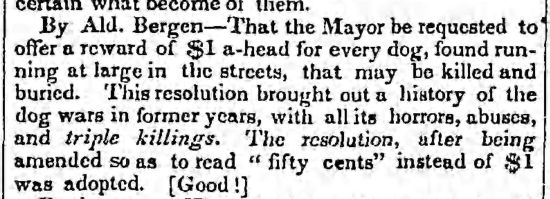
Finally, the Common Council in Brooklyn acted, as Alderman Bergen of that lofty body lodged a resolution asking the Mayor to offer to all Brooklynites everywhere “$1 a-head for every dog, found running at large in the streets, that may be killed and buried.”
ENTER MAYOR SPRAGUE
Joseph Sprague was not born in Brooklyn, but he became one of the more beloved mayors of the city when he was elected in 1843.
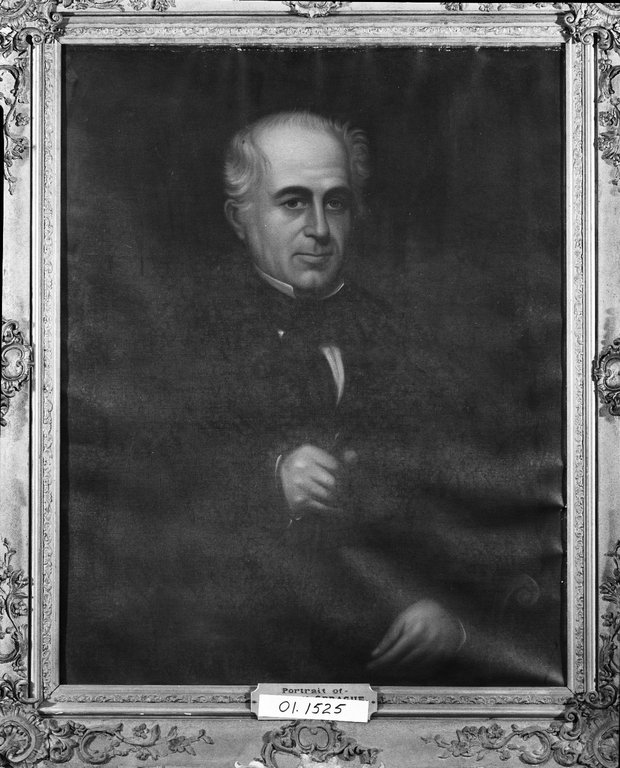
Largely responsible for Brooklyn receiving its charter to be incorporated as a city, and for bringing Bushwick and Williamsburgh into the fold later, Sprague was a no-nonsense Jacksonian Democrat. He would suffered no fools gladly.
During his first term the Whig members of the common council refused to attend meetings and he had them arrested on the charge of misdemeanor in neglect of public business and compelled their obedience.
Walt Whitman, Brooklyn’s poet laureate, recalled Sprague as a distinctive man who stood out from the rest of any crowd.
“Then among the crowd you would see the tall stout shoulders of Joseph Sprague,” Whitman wrote, “with his white head.”
Before his time as mayor, when Brooklyn was still a village, he proved his public-mindedness when he implemented and oversaw a major street cleaning project that dramatically improved sanitary conditions in Brooklyn.
Though many laughed, it was a successful campaign.
His next would involve the stray dog population of the City of Brooklyn – particularly those “mad dogs.”
MAYOR OR DOG-CATCHER?
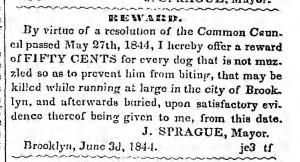
“REWARD,” Mayor Sprague’s proclamation began. “By virtue of a resolution of the Common Council passed May 27th, 1844, I hereby offer a reward of FIFTY CENTS for every dog that may be killed in the city of Brooklyn and buried, upon satisfactory evidence thereof being given to me from this date. J. SPRAGUE, Mayor, Brooklyn, June 3d, 1844.”
There is no detail as to how a resident was to prove the killing and burying of a dog, whether they had to have been rabid, or if it was sufficient that they were simply canines and that they were dead and buried.

Did the mayor or Brooklyn’s citizens assume that dogs would begin to be removed from the streets by their neighbors? Would there be a rush to do so? Would fights break out when someone mistakenly (or not) killed someone’s pet dog?
These are all questions that must have been in the minds of those most concerned about the “mad dogs” – as much as those who owned pets.
What is known, though, is the number of people who ended up claiming their 50 cents – exactly eight.
———————————————————————————————————————–
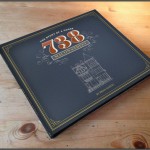 Brownstone Detectives is an historic property research agency. Our mission is to document and save the histories of our clients’ homes. From our research, we produce our celebrated House History Books and House History Reports. Contact us today to begin discovering the history of your home.
Brownstone Detectives is an historic property research agency. Our mission is to document and save the histories of our clients’ homes. From our research, we produce our celebrated House History Books and House History Reports. Contact us today to begin discovering the history of your home.